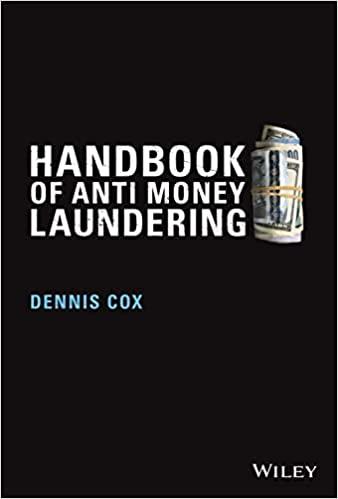Question
You are a portfolio manager and senior executive vice president of Advisory Securities Selection Inc. Your firm has been invited to meet with trustees of
You are a portfolio manager and senior executive vice president of Advisory Securities Selection Inc. Your firm has been invited to meet with trustees of the Wood Museum Endowment Funds. Wood Museum is a privately endowed charitable institution that is dependent on the investment return from a $25 million endowment fund to balance the budget. The treasurer of the museum has recently completed the budget that indicates a need for cash flow of $3 million in 2013, $3.2 million in 2014 and $3.5 million in 2015 from the endowment fund to balance the budget in those years. Currently the entire endowment portfolio is invested in Treasury notes and money market funds because the trustees fear a financial crisis. The trustees do not anticipate any further capital contributions to the fund.
The trustees are all successful businesspeople and they have been critical of the fund's previous investment advisors because they did not follow a logical decision making process. In fact, several previous managers have been dismissed because of their inability to communicate with the trustees and their preoccupation with the fund's relative performance rather than the cash flow needs.
Advisory Securities Selection has been contacted by the trustees because of its reputation for understanding and relating to the client's needs. The trustees have asked you, as a prospective portfolio manager for the Wood Museum Endowment Fund, to prepare a written report, in response to the following questions. Your report will be circulated to the trustees before the initial interview on 15 June 2013.
Explain in detail how each of the following relates to the determination of either investor objectives or investor constraints that can be used to determine that portfolio policies for this three year period for the Wood Museum Endowment Fund.
(a) Liquidity Requirements
(b) Return Requirements
(c) Risk Tolerance
(d) Time Horizon
(e) Regulatory and legal considerations
(g) Unique needs and circumstances
Step by Step Solution
There are 3 Steps involved in it
Step: 1

Get Instant Access to Expert-Tailored Solutions
See step-by-step solutions with expert insights and AI powered tools for academic success
Step: 2

Step: 3

Ace Your Homework with AI
Get the answers you need in no time with our AI-driven, step-by-step assistance
Get Started


